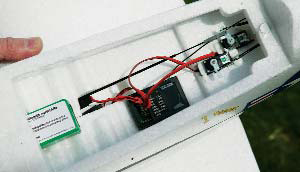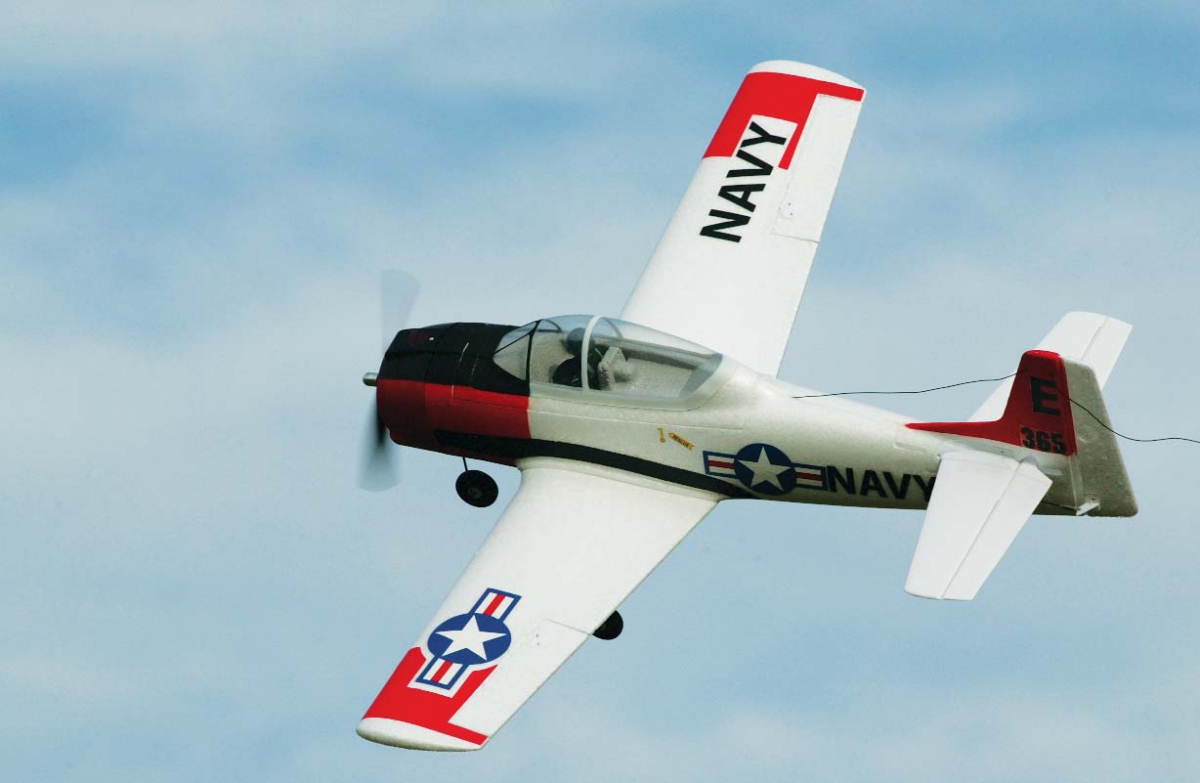A Classic Postwar Trainer Comes To Your Local Park
 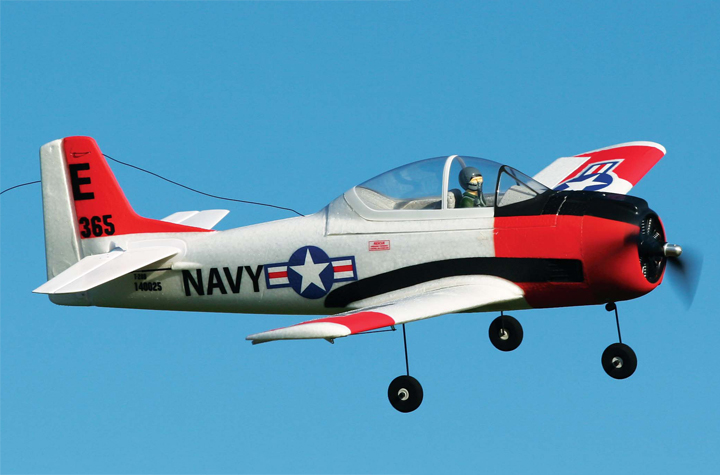 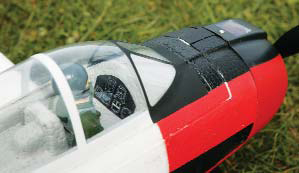 Success and recognition can be challenging goals, especially when you are trying to escape the shadow of a more famous older sibling. Such is exactly the case for North Americans T-28 Trojan. Following the WWII-era T-6 Texan trainerof which over 17,000 examples have served the armed forces of almost 50 countries the T-28 had some pretty big shoes to fill. Success and recognition can be challenging goals, especially when you are trying to escape the shadow of a more famous older sibling. Such is exactly the case for North Americans T-28 Trojan. Following the WWII-era T-6 Texan trainerof which over 17,000 examples have served the armed forces of almost 50 countries the T-28 had some pretty big shoes to fill.First ordered in 1950, the T-28 was quickly adopted by the Air Force, Navy and Marines. The bubble canopys excellent visibility, the predictable ground handling (courtesy of the tricycle landing gear) and 1,425 horsepower from the big Wright Cyclone radial soon made it a favorite among instructors and students alike, and over 2,200 were built before the production line was shut down in 1957. It continued to earn its keep, though, and served with the Navy until the mid-1980s.
ON THE BENCH Like the ParkZone warbirds that preceded it, the T-28 is nearly ready to fly right out of the box and can be ready for flight very quickly. The entire assembly process takes less than half an hour. All the equipment is included and installed at the factory. You will need to slide the horizontal stabilizer through the aft fuselage, tape it into place and connect the elevator pushrod. The wing is attached with one nylon screw, and the main landing gear snaps into place. The steerable nose gear is mounted onthe firewall with a single setscrew for the steering arm. Step 6 in the manual shows how to install the propeller, but my |
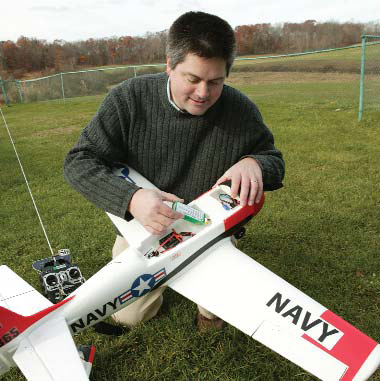 SPECS SPECSPLANE: T-28 Trojan MANUFACTURER:ParkZone DISTRIBUTOR:Horizon Hobby TYPE:Ready-to-fly electric warbird park flyer FOR:Intermediate pilots WINGSPAN:43.5 in. WING AREA:305 sq. in. WEIGHT:30.5 oz. WING LOADING:14.4 oz./sq. ft. LENGTH:36 in. RADIO:4-channel required; flown with a ParkZone ZX10 FM transmitter, ParkZone ZX10 6- channel receiver, 2 ParkZone SV80 servos (ailerons) 1 ParkZone SV120 servo (elevator), 1 ParkZone DSV130M servo (rudder) POWER SYSTEM:ParkZone 480 960Kv brushless outrunner motor, ParkZone 9.5×7.5 prop, E-flite 25A programmable brushless speed control, 3S 1800mAh LiPo battery FULL-THROTTLE POWER:17.6 amps, 199.6 watts, 6.54 W/oz., 104.7 W/lb. TOP RPM:7,845 DURATION:15 – 18 min. MINIMUM FLYING AREA:Ballfield PRICE:$219.99 COMPONENTS NEEDED TO COMPLETE:None. All required equipment is included and installed. SUMMARY The ParkZone T-28 is a goodlooking replica of the popular postwar military trainer. It is constructed of durable foam and comes painted in a realistic highly visible Navy color scheme with a nice pilot already in the office. The ZX10 radio system features 3-wire servos. The best part is its flight performance. This classic offers all the thrills of the prototype, save paying the tab on the 60+ gallon-per-hour fuel burn.
|
AIRBORNE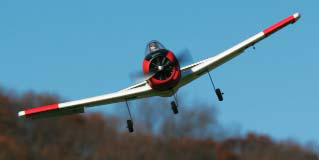 It is always good to range-check a new model, and the manual details how to do that correctly with the T-28. ParkZone also recommends that you first fly with low rates, so I confirmed the switch position before I connected the flight battery. It is always good to range-check a new model, and the manual details how to do that correctly with the T-28. ParkZone also recommends that you first fly with low rates, so I confirmed the switch position before I connected the flight battery.
|
| CONCLUSIONIf you are one to read and follow directions, I would switch steps one and two. ParkZone includes a nice balancing LiPo battery charger for 2- and 3-cell packs, and you will want to get the included 3-cell battery connected as soon as you can. You should be done with assembly long before the charger does its job. Once the LED is glowing, you can back up and install the AA batteries (also included) in the transmitter. The ParkZone T-28 RTF is available on six different 72MHz frequencies as well as in a PNP version without the radio if you want to use your own gear. These options will let you and all your friends assemble a squadron for fun flying sessions and even a simple one-design racing class. Consider picking up a spare battery because everyone at your field will want to have a go with this classic warbird until they get their own. Links ParkZone, distributed by Horizon Hobby Distributors, www.parkzone.com, www.horizonhobby.com, (877) 504-0233 |
 Fly RC Magazine WE LIVE RC
Fly RC Magazine WE LIVE RC
